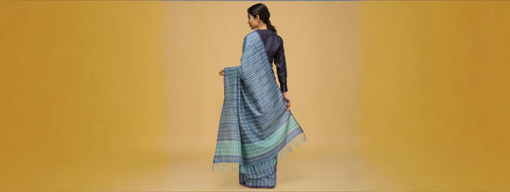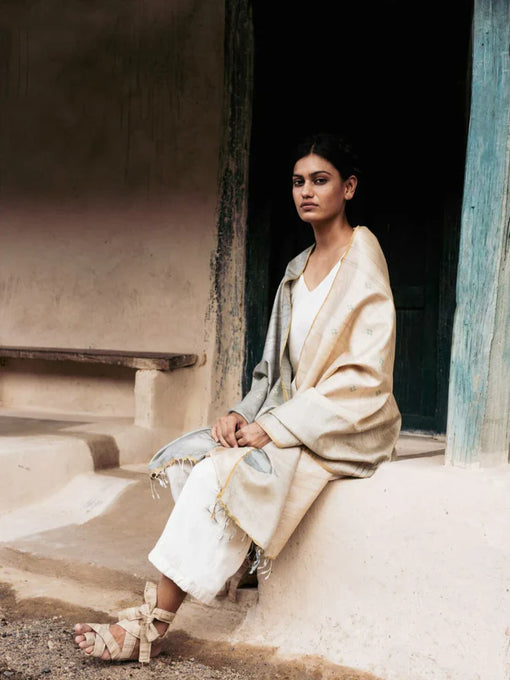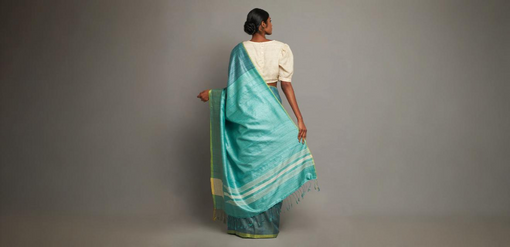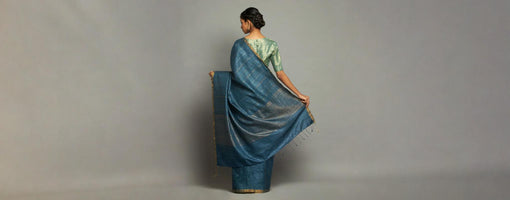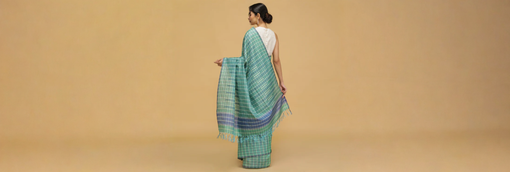
A Draped Legacy
What makes a saree more than just six yards of fabric? Yes, the quality of the fabric is important but there are many other elements that make sarees the garment that reflects our tradition. High quality silk sarees are found all over the world. With so many options to choose from, it is hard to pick between a traditionally-made handloom saree and a “flawless” but soulless designer saree. Beyond being a piece of garment, a saree needs devotion and soul. Handloom silk sarees might not be flawless like designer sarees, but even behind the imperfections, there are stories worth listening to. At Kosala, we truly believe a saree is deeply rooted in our tradition because of its significance in the growth of handloom artisans.
The Art Behind High Quality Silk Sarees
Behind every kosa silk saree, there is an artisan putting his blood, sweat, and tears into the same art that feeds them and their family. This artist understands the right rhythm to make an imperfectly perfect saree, they have studied the art of handloom to know the texture and sheen of a fabric. Handloom weaving is a sustainable process, from ethically sourcing the silk to adding the finishing touches. At Kosala, we strive to preserve our culture in high quality silk sarees made with handloom artistry.
The Beauty of Handloom Craftsmanship
There is something wordlessly exquisite about the feel of handloom silk sarees, the kind of tangible luxury that machines cannot imitate. The gentle unevenness of the weave, the soft sheen that shifts with light, and the easy drape all whisper of human touch and labor. Kosala is where each weave is a tribute to authenticity and longevity, where every yarn is treated with care and respect for its source.
Behind each saree is the beat of creativity, a dedication heartbeat. The designers at Kosala infuse emotion into each piece, so each saree not only holds beauty but also a tale.
Style Beyond Trends: The Kosala Aesthetic
At Kosala, style is timeless. The brand’s aesthetic thrives on silhouettes that never fade, minimal embellishments that allow the fabric to speak, and textures that capture light and life in equal measure. While trends come and go, Kosala’s designs remain a symbol of lasting elegance, a reflection of grace that transcends seasons.
Each saree is crafted to be something beyond clothing; it's an heirloom. Polished yet wearable, traditional yet timeless across generations. Of Kosala's classic styles, the plain tussar silk sarees shine with their unassuming sophistication, simplicity with a regal, timeless feel and quiet self-assurance.
What Makes Kosala Sarees Truly High Quality
A Kosala saree is the handiwork of both technique and spirit. Each one is made with a careful process, from the selection of high-quality Kosa silk to the final touches that mark luxury. Delicate borders, hand-stitched embellishments, and a subtle shine that catches light with fluid ease are all the marks of Kosala's expertise.
Every saree is handled by skilled hands, and not machinery. It's a combination of traditional handiwork and modern-day sophistication that ensures Kosala is equated with high quality silk sarees: classy, long-lasting, and unmistakably genuine.
Draping the Kosala Way: Style & Care Tips
Draping high quality silk sarees are an art form. For weddings, let the fabric flow freely with very few pleats to accentuate its rich texture. For formal events, pair it with a crisp blouse or show-stopping jewelry for a confident look. On festive occasions, experiment with contrasting borders or subtle accessories that complement the saree without overwhelming it.
To maintain the natural texture and luster, Kosala suggests dry cleaning gently and keeping the saree in aerated fabric bags. The brand believes in slow fashion, making clothes that remain elegant for years, not seasons.
Why Kosala Stands Apart
Kosala represents something beyond high quality silk sarees, it represents legacy. Each saree is crafted with the principles of sustainability, heritage, and thoughtful artistry. It is elegance without trying, luxury without waste.
At its core, Kosala honors the hands that make it happen, the artisans whose skill ensures our heritage lives on. Every saree is a weave of skill, patience, and love. When you wear Kosala, you wear a tale, woven with heritage, heart, and humaneness.
FAQ
Q. How to check for pure silk mark?
Look for the Silk Mark tag issued by the Silk Mark Organisation of India — it guarantees 100% pure silk. Pure silk feels soft, slightly textured, and warm to touch, unlike synthetic silk which feels smooth and cool. You can also burn a loose thread — pure silk smells like burnt hair and leaves fine ash, not melted residue.
Q. How do I verify my handloom mark?
A genuine handloom saree carries the Handloom Mark from the Government of India. Each mark has a unique code you can verify on handloommark.org. You’ll also notice tiny weaving irregularities and texture variations — clear signs of authentic handwoven craftsmanship.
Q. Why are handloom silk sarees more expensive than machine-made ones?
Handloom silk sarees cost more because they’re woven by hand, often taking days or weeks to make. They use pure silk, intricate designs, and traditional techniques that machines can’t replicate — giving each saree artistic and cultural value.
Q. What should I look for when buying a high-quality silk saree online?
Check for Silk Mark or Handloom Mark certification, detailed fabric descriptions, and clear close-up photos. Buy from trusted sellers or government-recognized handloom brands, and always read reviews or return policies before purchase.
Learn More


